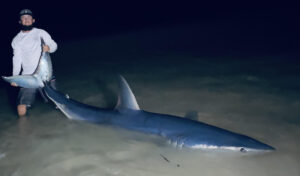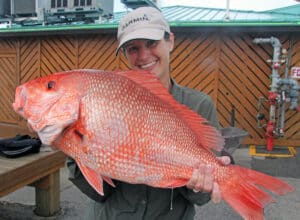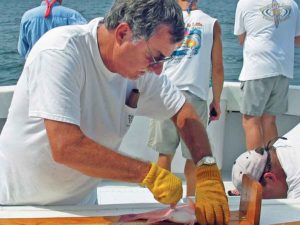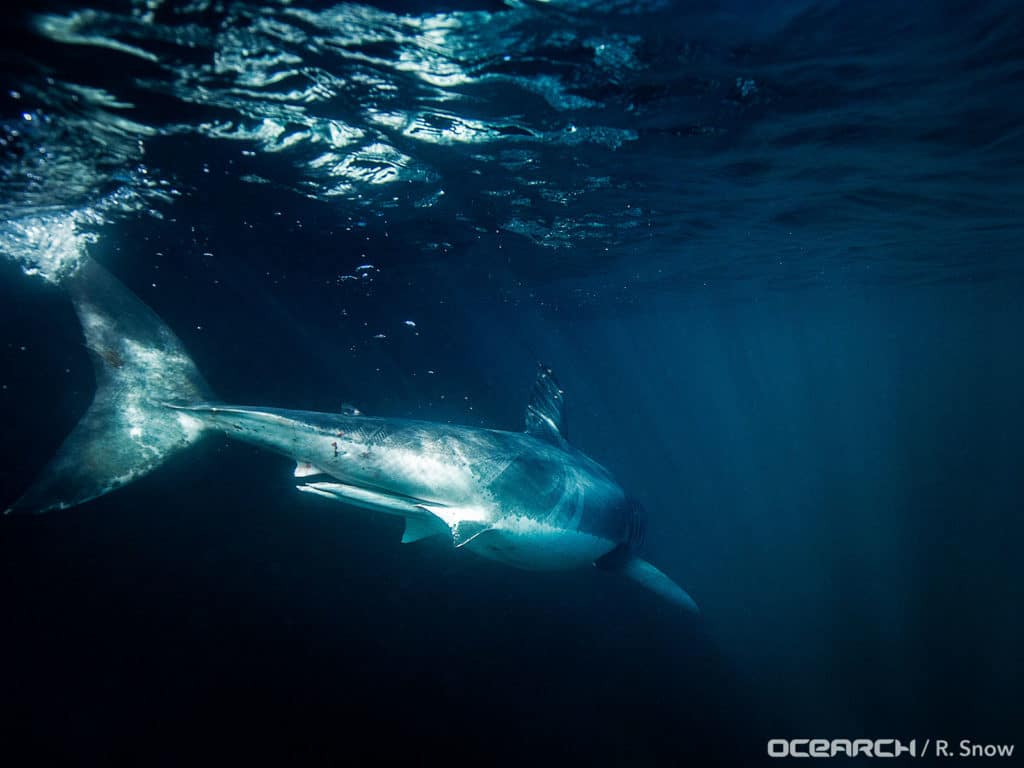
Just like northern residents who trek south to vacation in the warmth, great white sharks are moving into Florida’s balmy waters this winter. It happens every year, with heavyweight sharks acting the part of snow birds, visiting from out of town.
According to OCEARCH, a scientific nonprofit that monitors different shark species via fitted tracking devices, white sharks have moved into Florida waters big time, with more likely on the way. The organization revealed via its online Global Shark Tracker that a 12-foot, 4-inch white shark weighing nearly 1,200 pounds was verified off the coast of Florida, just north of Fort Lauderdale on Jan. 22.
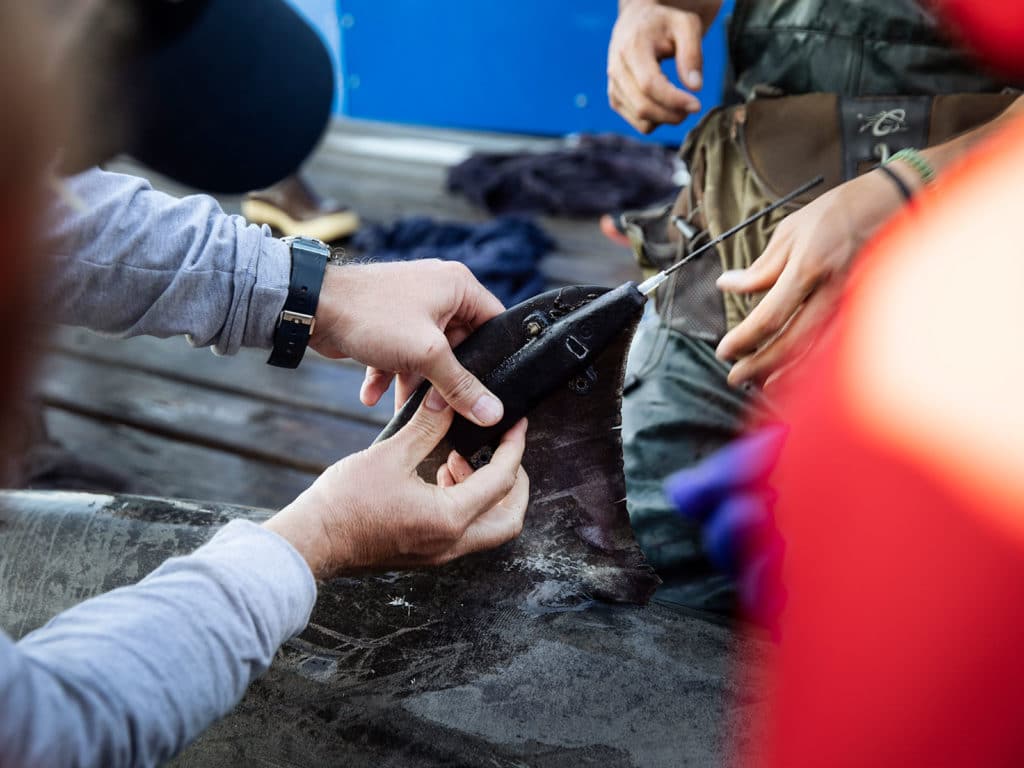
The shark, named “Ironbound,” was originally captured, measured, and weighed by OCEARCH in 2019 near West Ironbound Island, Nova Scotia. Ironbound was fitted with a Smart Positioning and Temperature (SPOT) tag so it could be monitored and located by OCEARCH after release. SPOT tags produce a location “ping” whenever a shark nears the water’s surface.
So, Southeast Florida boaters, keep a look out for Ironbound, not out of fear but curiosity. OCEARCH points out that there aren’t more sharks along the Atlantic Coast, just more tagged sharks. The organization and its collaborative research team recently published a peer-reviewed paper in the scientific journal Frontiers in Marine Science, providing a comprehensive analysis of the migrations of white sharks in the western North Atlantic Ocean. The study analyzed the movement patterns of 48 tagged white sharks over multiple years and life stages.
Tracking Sharks for Science
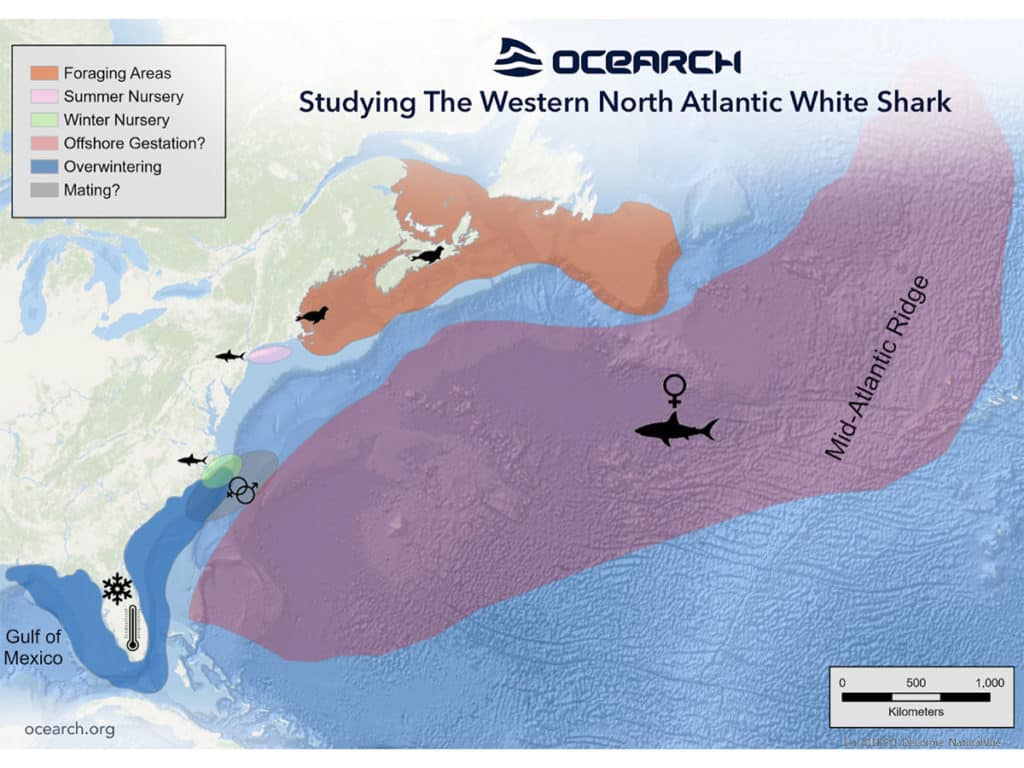
A second giant white shark, known as “Maple,” was recently located off Florida’s Panhandle. The 1,264-pound, nearly 12-foot shark pinged on Jan. 24 far offshore the town of Destin. OCEARCH reported, via a Facebook post, that Maple entered the Gulf of Mexico at about the same time in 2022, spending January through May in the area. They’re interested to see if Maple winters again in the Panhandle for the same period.
Farther south, another white shark named “Keji,” measuring 8 feet, 7 inches and weighing 580 pounds, was pinged in the open Gulf of Mexico, northwest of Tampa on Jan. 25. The juvenile male was one of nine sharks tagged off Nova Scotia in 2021.
Other great whites were recently pinged in southeast Atlantic waters tagged by OCEARCH. The concentration centers off the North and South Carolina coasts, with six different sharks revealing their locations in mid to late January. Most sharks are in the 300- to 500-pound range, but a couple are much larger. “Scot,” weighing 1,650 pounds, was verified offshore Wilmington on Jan. 13. A second heavyweight, “Breton,” weighing 1,440 pounds, pinged on Jan. 26 in the same waters.
A Chance to Spot a Great White Shark
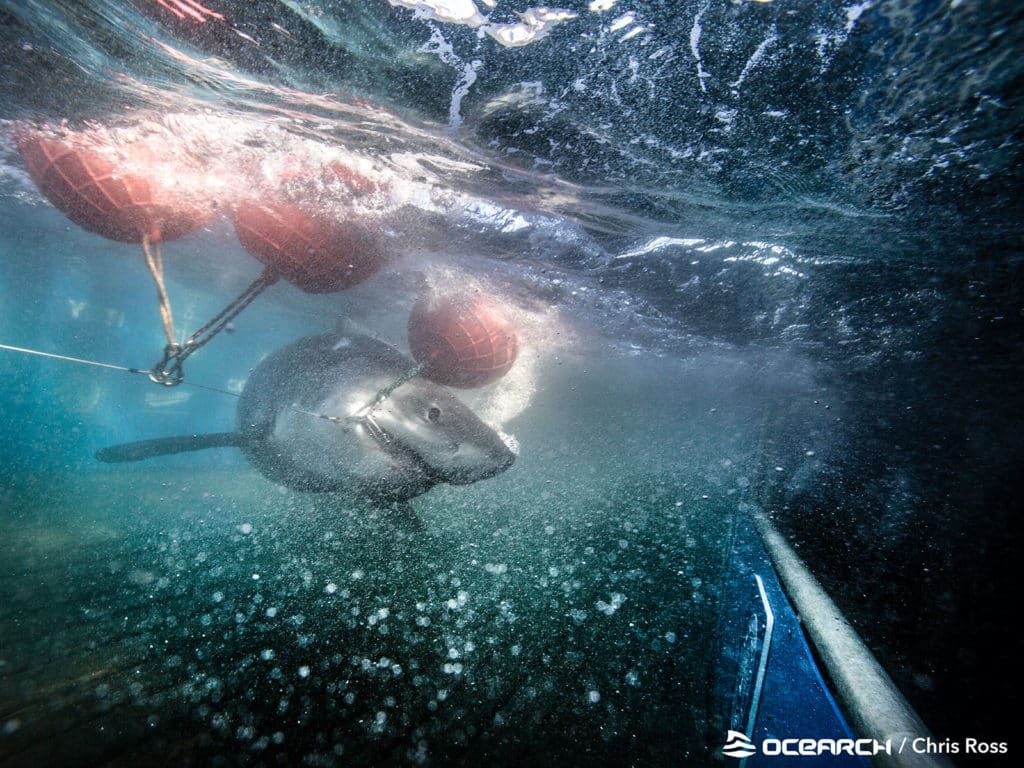
Offshore anglers might also notice the great whites moving south this winter, especially into Florida. Each year at this time, there always seems to be a new video of a great white sighting spreading around social media.
The week of Jan. 19, Campbell Keenan, a 12-year-old visitor from Massachusetts, was fishing with his family off Fort Lauderdale when he hooked and boated an 11-foot white shark after a nearly hour-long battle. The shark was tagged and released.
“These sharks are following tuna and marlin going to the Gulf of Mexico to spawn,” said Patrick Rice, science officer at the College of the Florida Keys, to Keys Weekly. “They follow the big migratory species.”

